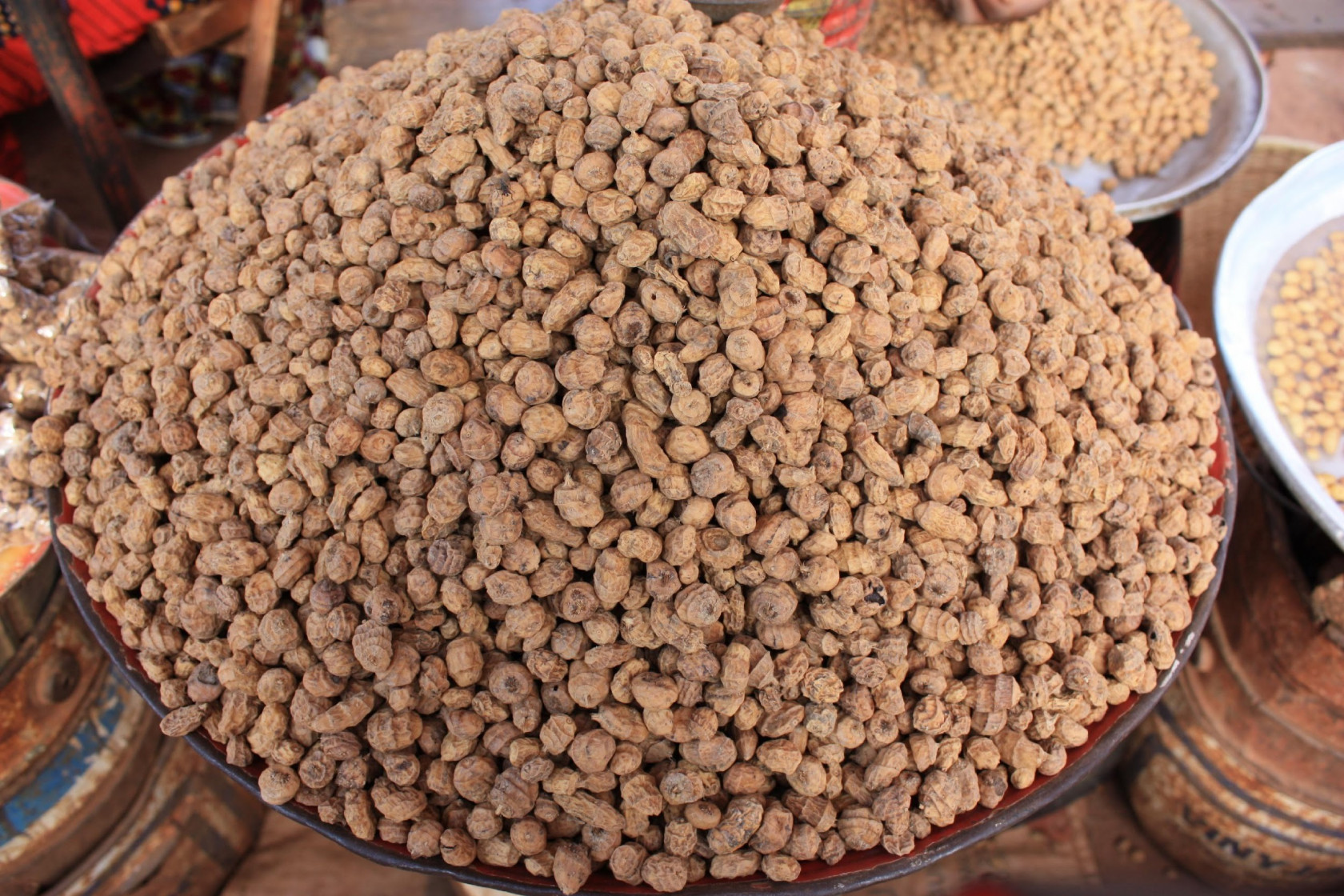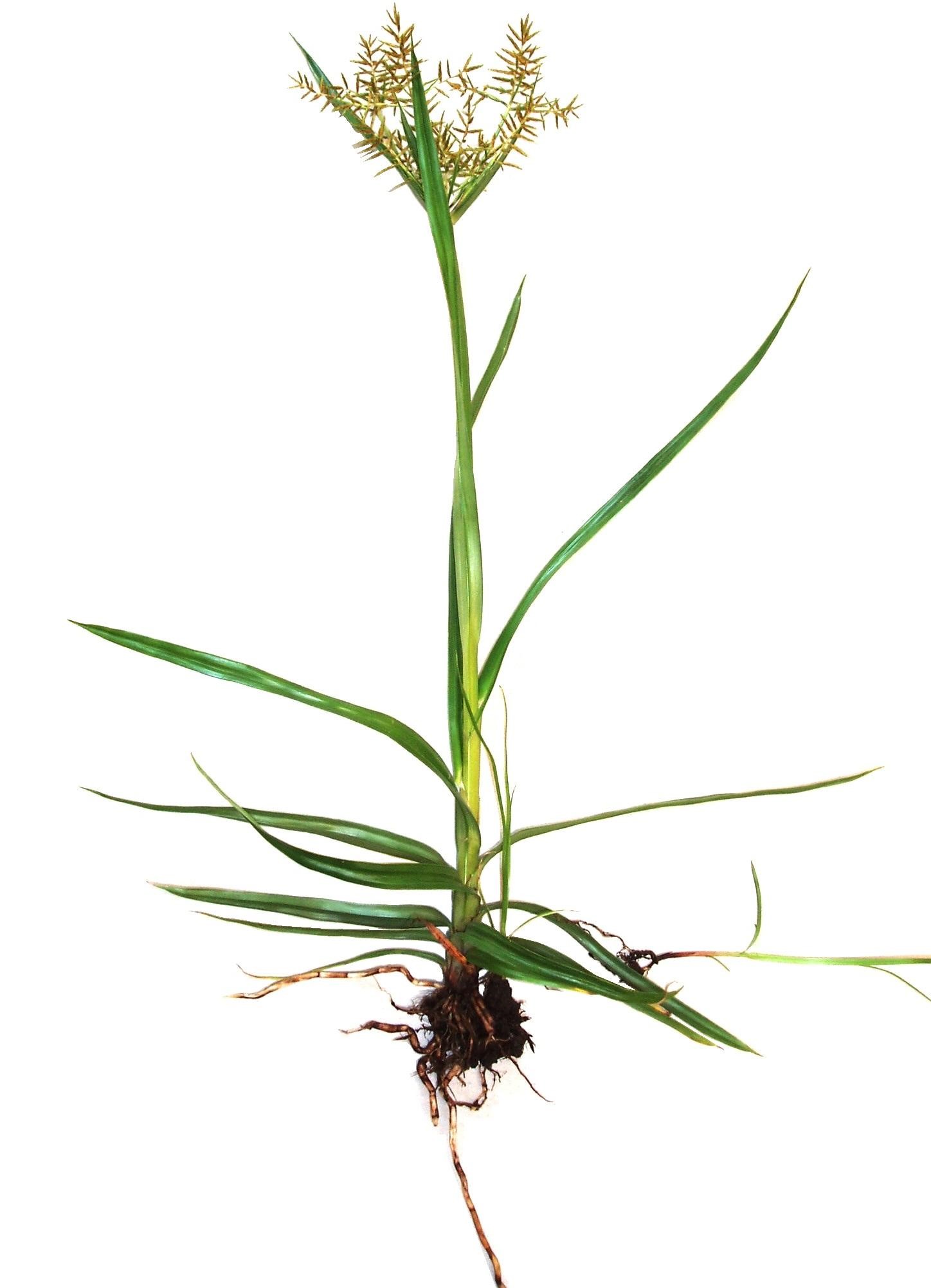Tiger nut
Common Names: Tiger nut, zulu nut, nutgrass, yellow nutsedge, edible rush, earth almond, aya
Scientific Name: Cyperus esculentus
Clima: Temperate
Plant Description: The tiger nut is a grasslike plant, its dark green color leaves grow 40-50 cm tall in rosette form, and are rough to the touch. The root produces fleshy peanut-like tubers.
It grows annually or perennial, depending on each plant and degree of maturity of the flower the color can be brownish, gold, yellow to reddish.
Tiger nut is native to Africa.
Cultivation: Tiger nut is one of the oldest cultivated plants by humans. There is evidence that thousands of years ago it was an important crop in ancient Egypt.
It adapts to a variety of climates, warm weather with mild temperatures (13 to 25°C) and 4 to 5 months without frost will let the plant complete the vegetative cycle.
The tiger nut will thrive in full sun and loamy soil. Although it will grow fine in damp soil, but not mucky wet. It is common to find it on disturbed soil but the tuber will be smaller. It can deal well with temporary floods. Wherever corn grows it is very possible that tiger nut will.
The plant is sowed by hand 2.5 to 5 cm deep, and 15 to 20 cm apart, it is very important to keep them moist during the growing season. In one hectare it’s common to sow around 120 kg of seeds.
It takes 75 to 125 days to reach full ripeness, the part above ground will look very much like grass and below ground the tubers will grow, each season a plant can grow around 75 tubers, depending on weather and soil nutrients conditions.
It is very important to keep weed control around the tiger nut or other grasses or weeds will choke it and affect it’s growing process.
If the tiger nut finds adequate conditions it can proliferate widely and get out of control, there are many places where it is considered an invasive species.
It is common to find it growing close to cattails in damp soil that occasionally flood. Dig up the tubers in the fall and plant them where you want them to grow. For transplanting you need the young plants, if you try to move old ones, they will die.
The fall is the time for harvest, dig up the tubers and gather the biggest ones, leave the small ones for the next season. Uses:In Africa, Middle East and Spain they are grown as food crops. The tubers are edible raw and cooked. Sliced in salads, fried or many other ways. In Spain there is a beverage of arabic origin called horchata made with it.
Uses:In Africa, Middle East and Spain they are grown as food crops. The tubers are edible raw and cooked. Sliced in salads, fried or many other ways. In Spain there is a beverage of arabic origin called horchata made with it.
Tiger nuts have high nutritional values, containing about 36% high quality essential oils, useful for cardiovascular diseases, besides it contains fiber, carbohydrates, proteins, vitamin A and B.
It has excellent drying and storage properties and is resistant to rot and bacteria.
Pests and Diseases:The tiger nut is a rustic plant, and presents few plant health issues, the most common are armyworms (Mythimna unipuncta), aphids and a type of moth specific to this genus of plants called Bactra lanceslana.
To deal with them in mass crops it is necessary to use chemicals.
References:
-
Colaboradores de Wikipedia. (2020, June 12). Cyperus esculentus. Wikipedia, La Enciclopedia Libre. https://es.wikipedia.org/wiki/Cyperus_esculentus
-
EcuRed. (n.d.). Chufa - EcuRed. Retrieved June 28, 2020, from https://www.ecured.cu/Chufa
-
Hancockk seed company. (n.d.). Chufa Seed (Food Plot). Hancockseed.Com. Retrieved June 28, 2020, from https://hancockseed.com/products/chufa-seed-food-plot
-
Mills, D. (n.d.-a). Chufa - growing guide & information. Wildfoodshomegarden.Com. Retrieved June 28, 2020, from https://wildfoodshomegarden.com/Chufa.html
-
Mills, D. (n.d.-b). Chufa Nuts: Nature’s Restaurant: A Complete Wild Food Guide - Fields, Forests & Wetlands Foods of Eastern North America. Nature’s Restaurant: Retrieved June 28, 2020, from http://natures-restaurant-online.com/ChufaNuts.html
-
Wikipedia contributors. (2020, June 22). Cyperus esculentus. Wikipedia. https://en.wikipedia.org/wiki/Cyperus_esculentus
En español: Chufa

